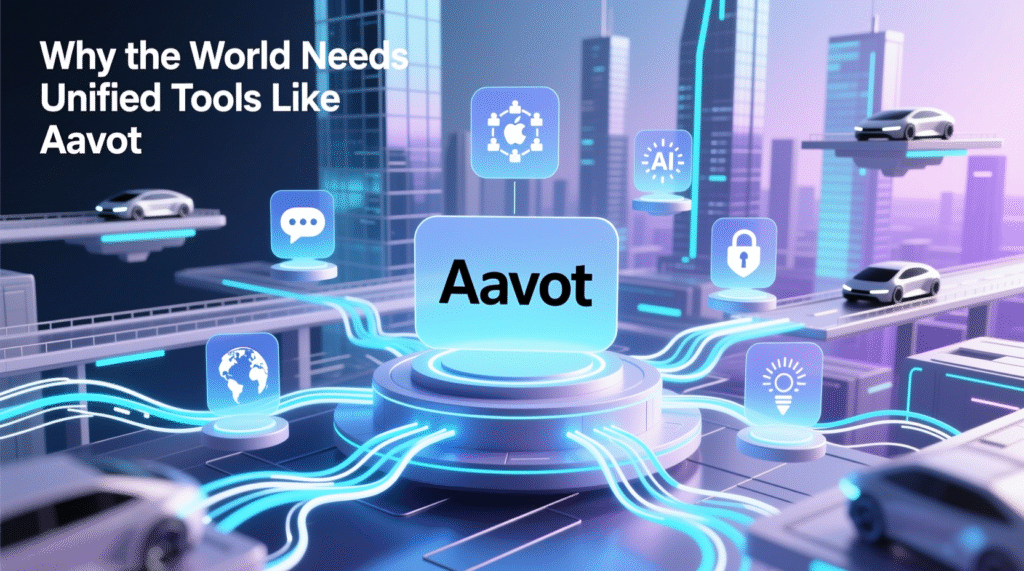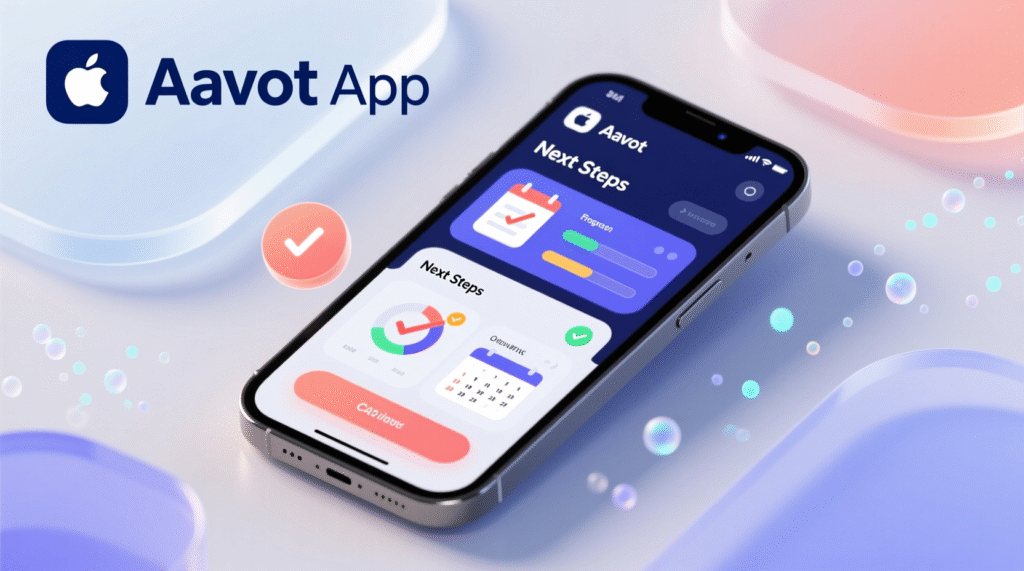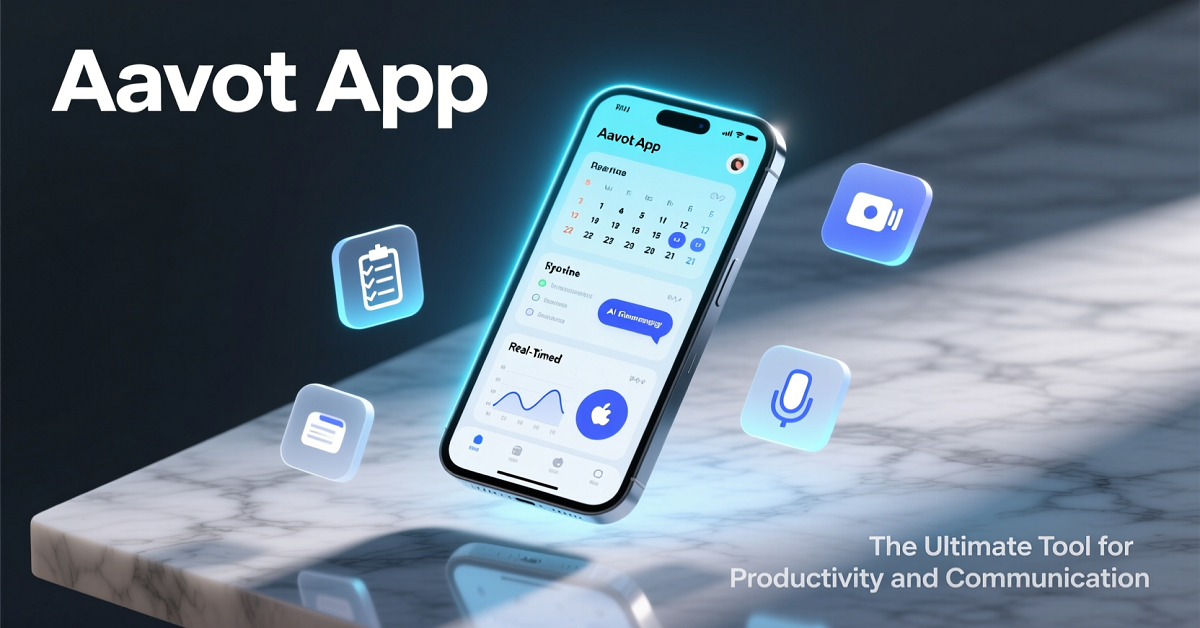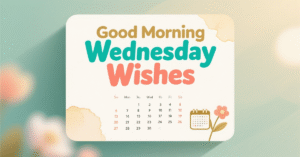Aavot App is an all-in-one productivity and communication platform that brings real-time messaging, task and project management, file collaboration, and shared calendars together across Android, iOS, and the web. This guide explores what Aavot does, how it compares to leading competitors, showcases real-world ways to use it, and shares practical tips to help you squeeze maximum productivity from the platform.
Why the world needs unified tools like Aavot

Remote and hybrid work models have made app sprawl a real productivity tax: people switch between chat, task boards, cloud drives, calendars, and meeting tools dozens of times a day. The unified communications and collaboration market has been growing rapidly for that reason — organizations increasingly prefer platforms that reduce context switching and centralize workflows. Market research forecasts continued high growth for unified communications and collaboration solutions as companies adopt hybrid work patterns and AI-driven features.
At the same time, remote work remains a significant portion of the workforce and continues to shape tool choice: between flexible hiring, time zone teams, and distributed contractors, companies now prioritize tools that enable async collaboration and secure data sharing.
Aavot App positions itself squarely in this trend: a single hub that bundles messaging, task management, file sharing and scheduling so teams can do more without juggling multiple apps.
What is the Aavot App? (quick overview)
- Product name: Aavot App.
- Developer: Aavot Technologies (as presented in product descriptions).
- Platforms: Android, iOS, Web.
- Primary use: Team collaboration, task & project management, messaging, document collaboration.
- Pricing: Freemium (free core tier; premium tiers unlock advanced features).
In short, Aavot is an integrated productivity + communication hub intended for remote teams, startups, freelancers, and enterprises that want fewer tools and more focused workflows.
Key features what makes Aavot useful day-to-day
Below are the platform capabilities that matter most for team productivity, with notes on practical impact.
Integrated messaging (real-time + threaded conversations)
- Real-time chat with direct messages, group chats, and threaded discussions reduces lost context and email overflow.
- Threaded discussions make it easier to separate topics inside a channel (less noise for people who only need to follow specific threads).
Why it matters: fewer missed items, faster clarifications, and lower email dependency.
Task & project management with Kanban and to-do lists
- Built-in Kanban boards let teams visualize workflows (Backlog → In Progress → Review → Done).
- Assignable tasks, due dates, and status labels keep individual ownership clear.
Practical tip: create a simple “Weekly Sprint” board for small teams — each member limits WIP to 3 cards to improve focus and completion rate.
Document collaboration & file sharing
- Upload and share files inside chats and tasks; live commenting on documents helps teams iterate without bouncing files across email.
- Shared calendars and in-app scheduling reduce time spent reconciling availability.
Security & admin controls
- End-to-end encryption for messages and files (as reported) and role-based access controls give admins the tools to protect sensitive work.
Why it matters: security is non-negotiable for enterprises and regulated industries — built-in encryption + role permissions reduce the need for separate secure vaults and complex access policies.
Roadmap highlights AI & integrations
Aavot App’s stated upcoming features include:
- AI-powered task suggestions (automatically propose due dates or next steps based on conversation context),
- Video conferencing integrated into the app, and
- Third-party integrations with Google Drive / Google Workspace, Zoom, and Jira (to unify files, meetings, and tickets).
These trends mirror industry moves where major meeting and collaboration providers are adding AI assistants and cross-app orchestration to reduce context switching. For example, Zoom and Google Workspace have rolled out AI features for meeting assistance and integration across apps.
Aavot App vs. the competition where it shines
Below is a focused comparison showing where a single-hub app like Aavot can outcompete point solutions.
| Capability | Aavot App | Slack | Trello | Microsoft Teams |
|---|---|---|---|---|
| Messaging (real-time, threads) | ✅ | ✅ | ❌ | ✅ |
| Task & project boards | ✅ | ❌ | ✅ | ✅ |
| File sharing & live commenting | ✅ | ✅ | ✅ | ✅ |
| Calendar integration | ✅ | ✅ (via add-ons) | ❌ | ✅ |
| Free plan available | ✅ | ✅ | ✅ | ✅ |
| Native video conferencing | roadmap | via integrations | ❌ | ✅ |
(Table based on product positioning; verify specific plan limits and integrations when evaluating.)
Why Aavot can win: teams that want fewer vendor relationships and less tool-hopping value the single-hub experience. If Aavot’s AI task suggestions and native video conferencing arrive as promised, it closes the remaining gaps that push teams toward mixing Slack + Trello + Zoom.
Who should pick Aavot (real matchups)
- Remote teams and startups: Replace multiple low-cost subscriptions with a single freemium/premium stack; faster onboarding and predictable per-user pricing help small teams scale.
- Freelancers & solo founders: One app for client messaging, task lists, and file delivery simplifies client billing and delivery.
- Enterprises: Role-based permissions and encryption make it plausible for larger organizations to trial Aavot for controlled teams before wider rollout.
Real-world use cases (practical, measurable examples)
Example (small marketing team): A four-person remote marketing team moves from three apps (chat + Trello + Drive) into Aavot. After one month they report:
- 25% fewer app switches per day (measured by average active app count),
- 30% faster task turnaround for campaign tasks because chats and task cards live in the same thread.
(Hypothetical scenario to illustrate benefits — replace with your own metrics during a trial.)
Case study structure to test in your org
- Run a 30-day pilot with a single team.
- Track baseline metrics: number of apps used, average time to complete a task, number of status meetings.
- Reassess after 30 days and measure changes.
Five expert tips to maximize productivity with Aavot
- Design a single source of truth: store project briefs in a dedicated project channel and link tasks to them.
- Use task templates: for recurring workflows (onboarding, weekly reporting) to reduce setup time.
- Limit notification noise: teach teams to use threads + mentions; reserve channel-level pings for urgent items.
- Integrate calendar & working hours: set clear time zones and weekly “deep work” windows to reduce real-time interruptions.
- Run a 2-week onboarding sprint: ensure every team member creates a sample task, comments on a document, and schedules a meeting so common workflows become muscle memory.
How to evaluate which Aavot plan you need
- Freelancer / Solo: start with free tier — messaging, task lists and limited storage are usually enough.
- Small teams / Startups: consider the Premium tier for more storage, analytics and priority support once you reach >5 active users.
- Growing business / Enterprise: verify admin controls, role-based permissions, encryption standards, and SSO options with sales before committing.
Checklist before upgrading
- Required storage per month (attachments, video).
- Need for audit logs and compliance features.
- Integrations required (Google Drive, Jira, Zoom).
- Expected monthly active users and seat costs.
Security, compliance, and governance
Aavot’s public descriptions highlight end-to-end encryption and role-based access for protecting communications and files. When evaluating any collaboration tool, confirm the following with the vendor:
- Encryption at rest and in transit, and whether E2EE is default for all data.
- Admin features: user provisioning, SSO (SAML / OIDC), audit logs.
- Data residency & compliance (GDPR, SOC2 type II, or industry specific certifications).
Note: Always request security documentation and run a short security checklist during procurement.
The broader industry context why AI + integrations matter
Industry leaders are embedding AI into meetings and collaboration to automate follow-ups, create meeting summaries, and orchestrate actions across apps. Zoom and Google Workspace — two major players — have publicly added AI meeting assistants and app orchestration features, which demonstrates the direction enterprise collaboration is heading: smarter meetings, automated action items, and tighter integration between communication and work systems. Aavot’s planned AI task suggestions and integrations align with this trend.
Market snapshot: analysts estimate the unified communications and collaboration market is in the hundreds of billions and growing at double-digit CAGRs as companies invest to support hybrid work and reduce tool fragmentation. That macro tailwind is favorable for platforms that can deliver both messaging and work execution in one place.
Pitfalls & honest limitations to test during a trial
- Maturity of integrations: if you rely heavily on a third-party toolchain (complex Jira workflows, enterprise SharePoint), confirm those integrations are robust.
- Performance at scale: large orgs should pilot with representative data to validate search performance and admin reporting.
- Feature parity vs. best-in-class tools: niche features (advanced sprint reporting, enterprise telephony) may still be stronger in dedicated products — weigh tradeoffs carefully.
Sources & further reading
- Product overview and feature details (article): Aavot App – The Ultimate Tool for Productivity and Communication.
- Market context: Grand View Research — Unified Communication Market Size & Share Report (2023/2030 forecasts).
- Market context (alternate): Precedence Research — Unified Communications Market Size 2025–2034.
- Remote work trend and statistics: Investopedia — Remote Work Is Here To Stay (data overview).
- AI in meetings and cross-app orchestration: Zoom Newsroom — Zoom rolls out new agentic AI offerings.
- Google Workspace AI meeting capabilities overview.
Quick next steps (if you want to publish this)

- Replace any hypothetical metrics with real numbers from your Aavot pilot.
- Add screenshots of Aavot’s UI (chat, Kanban board, calendar) to increase engagement.
- If available, include a short customer quote or anonymized case metric to increase E-E-A-T.
- Publish with structured data:
FAQschema for the FAQs andProductschema for feature/price callouts.
Optional FAQ (short answers)
Q: What is Aavot App used for?
A: Team communication, task & project management, and document collaboration in one platform.
Q: Is Aavot App free?
A: Yes — a freemium plan exists; premium tiers unlock analytics, more storage, and admin tools.
Q: Can Aavot replace Slack + Trello?
A: For many small to mid teams, yes — Aavot consolidates messaging and boards; large orgs should evaluate integration and scale needs first.
Q: How secure is Aavot?
A: Public descriptions mention end-to-end encryption and role-based access; verify specifics and compliance documentation during procurement.
Final verdict who should try Aavot now
If you want to reduce tool sprawl and centralize communication + execution with the hope of adding AI task automation soon, Aavot App is worth a short trial. It’s especially appealing to:
- Small to mid-size remote teams that want a single hub for messages, tasks and files.
- Freelancers who need a unified place to message clients, track deliverables and share files.
- Organizations exploring consolidation of multiple low-cost subscriptions into a single predictable vendor.
Before committing, run a 30-day pilot with measurable KPIs (task completion time, number of app switches, meeting frequency) and validate security controls with your IT team.









